7 Garden Design Ideas to Transform Your Outdoor Space Efficiently
Creating a well-designed garden design ideas can enhance the beauty of any outdoor space and provide a relaxing environment. Many people look for ideas that are both practical and attractive to improve their garden’s layout and plant choices.
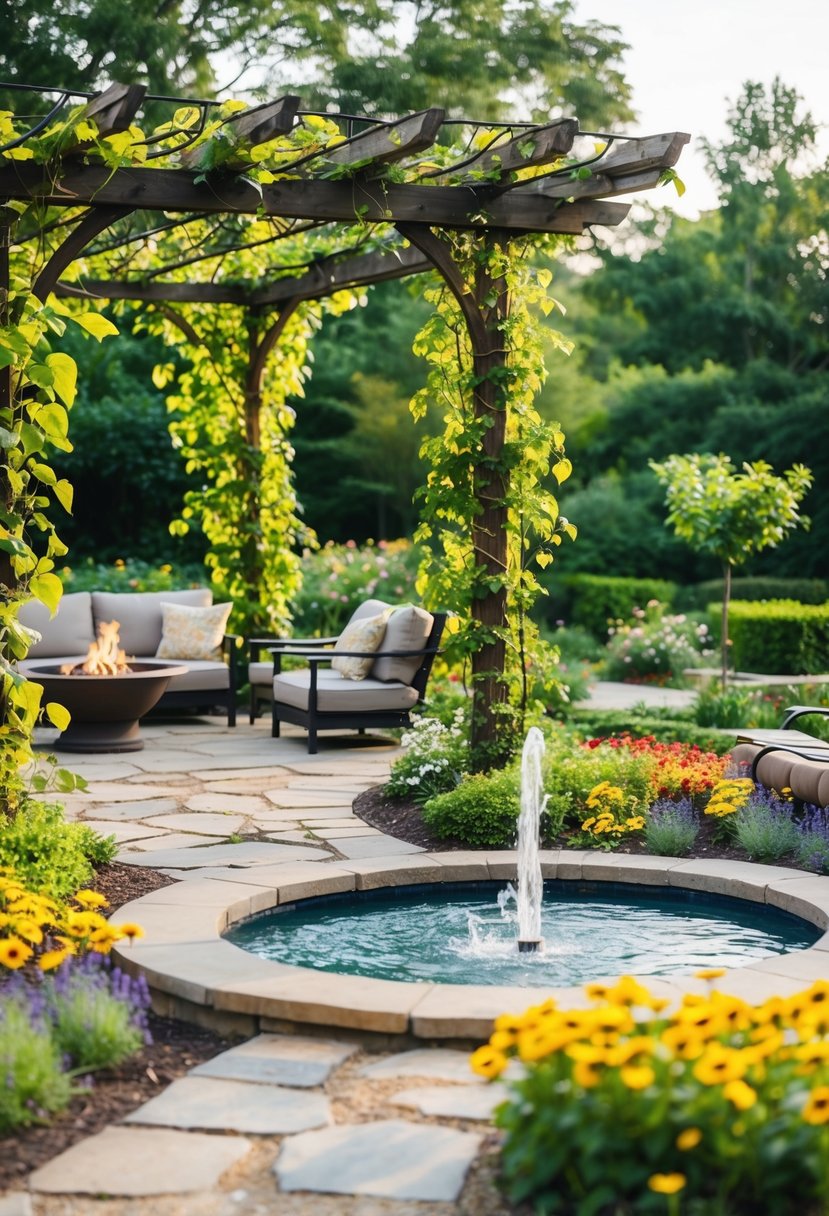
The key to a great garden is combining elements that fit the space while adding visual interest and comfort. With the right design ideas, any garden can become a more inviting and enjoyable place to spend time.
1) Create a focal point with an arched trellis to add height and interest
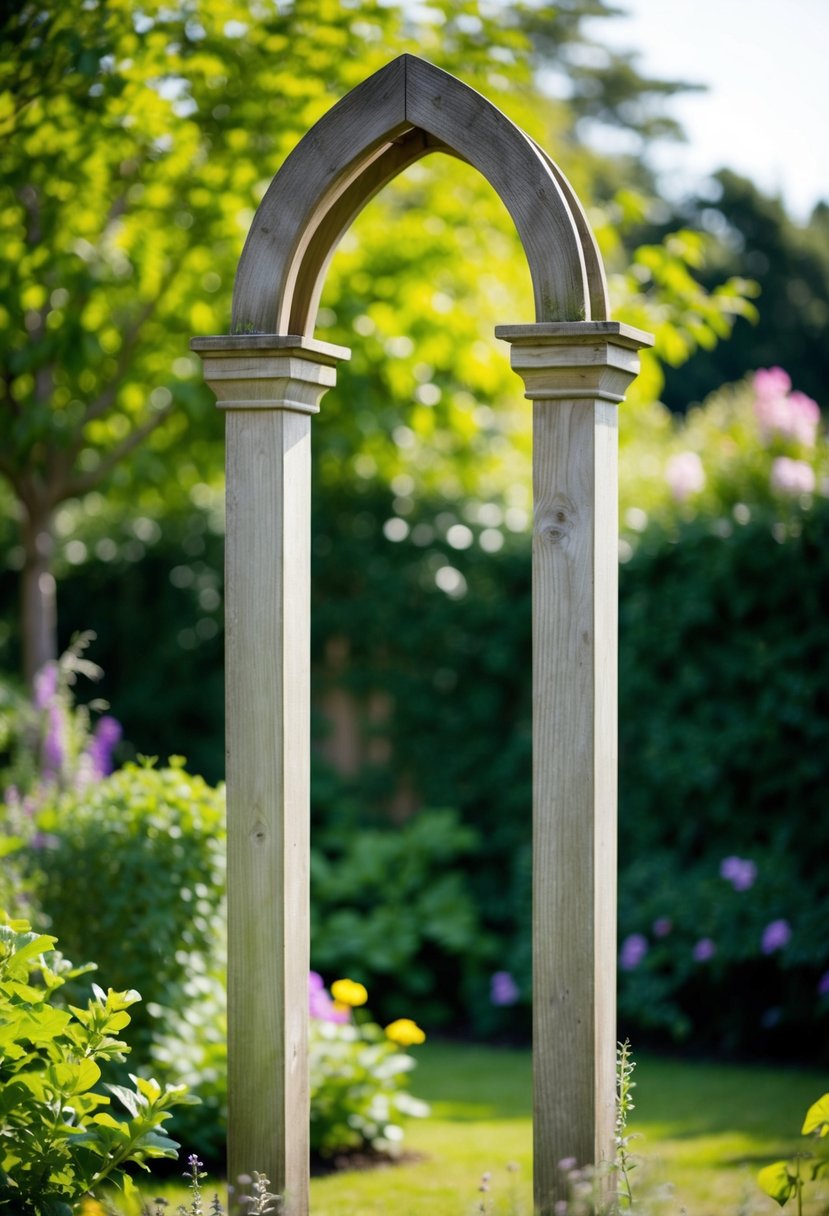
An arched trellis can become a strong focal point in a garden. It adds vertical height, drawing the eye upward and making the space feel larger.
The arch also provides structure for climbing plants. Vines, roses, or clematis can grow on it, adding color and texture.
Placing the arch at an entrance or along a pathway helps define areas. It can mark a garden room or create a natural walkway.
Using an arched trellis this way boosts both style and function. It adds charm without taking up much ground space. More ideas on garden arches can be found at 12 Garden Arch Trellis Ideas to Add Charm to Your Landscape.
2) Incorporate raised beds for better soil control and organized planting

Raised garden beds offer excellent benefits for both new and experienced gardeners. By improving soil drainage and structure, they create an ideal environment for plant growth. Gardeners can also tailor the soil mix to match the specific needs of vegetables, herbs, or flowers—leading to stronger, healthier plants.
In addition to promoting better growth, raised beds help keep the garden looking clean and organized. Defined planting areas make it easier to manage weeds, maintain crops, and rotate plantings seasonally. Plus, raised beds are highly versatile—they can be built in various sizes and shapes to fit patios, backyards, or even small balconies.
Adding structures like trellises or arches to raised beds allows for vertical growing. This can increase planting space in smaller gardens. For creative ideas on raised garden beds, see this raised garden bed design ideas.
3) Use terra-cotta pots to bring warmth and texture to small spaces

Terra-cotta pots add a natural, earthy feel to any garden. Their warm orange-brown color creates a cozy atmosphere, especially in small areas like balconies or patios.
The rough surface of terra-cotta gives texture that contrasts well with plants, making the space more interesting. Using different sizes and shapes can add variety without cluttering the area.
These pots are breathable, which helps plants grow healthier by allowing air and moisture to move through the soil. They are also sturdy and can last a long time with basic care.
For tips on styling terra-cotta pots in various rooms and outdoor spaces, see ideas for combining warmth and texture in your garden design.
You can find more ideas for using these pots at dabblinganddecorating.com/terracotta-decor.
4) Design a kitchen garden using compact, functional layouts

A compact kitchen garden uses space wisely. It focuses on grouping plants that grow well together in small areas. This helps make care and harvesting easier.
Paths and raised beds improve access. Well-planned beds reduce wasted space and keep soil healthy. Clear paths allow movement without stepping on plants.
Plants are arranged by size and sun needs. Taller plants go in the back or center to avoid shading smaller ones. This creates a balanced layout and saves room.
Using a compact design fits well in small yards or urban spaces. It makes growing vegetables and herbs practical and efficient. For more ideas on compact garden layouts, see vegetable garden layout design secrets.
5) Integrate trained fruit trees for vertical growth and visual appeal
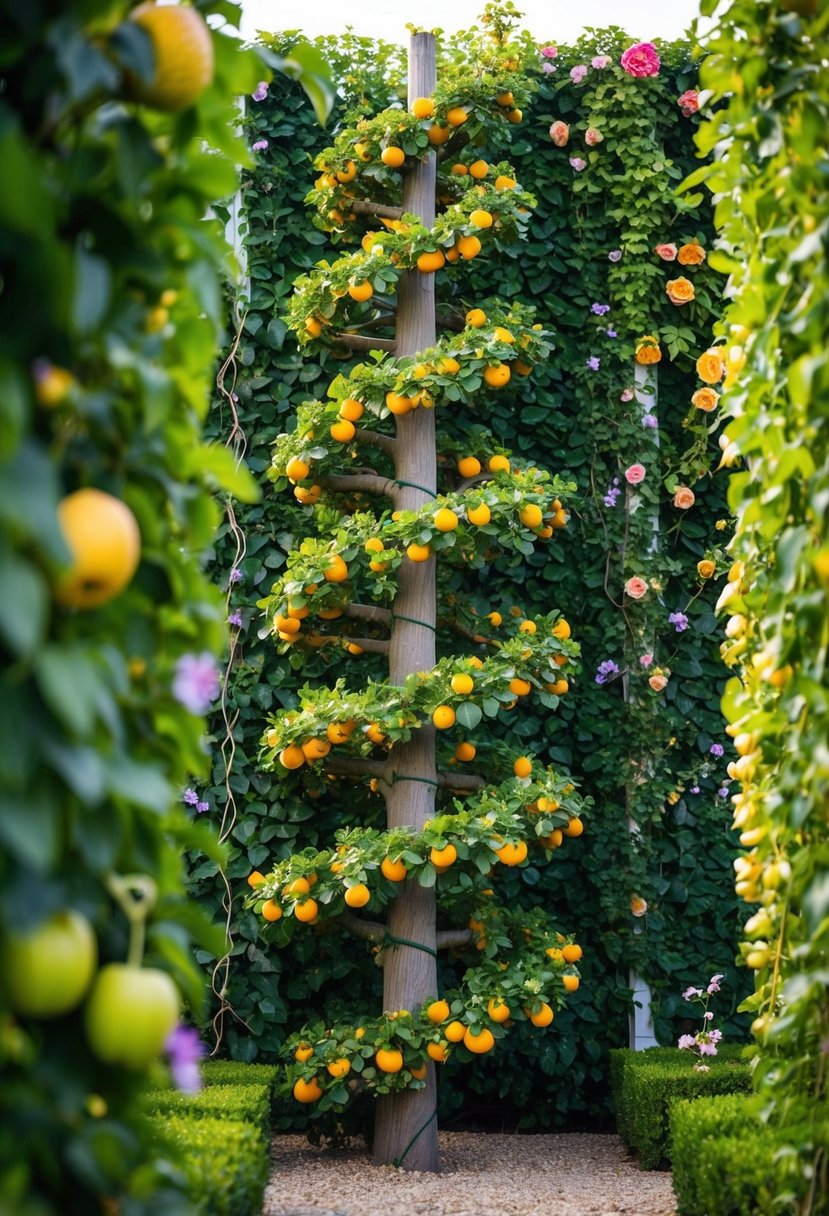
Trained fruit trees are a smart way to add height without using much ground space. They grow upwards along structures like trellises or walls. This helps maximize small gardens and adds a clean, organized look.
Using trained fruit trees also creates layers in the garden. Taller trees can provide shade for smaller plants underneath. This technique makes the garden more productive and visually interesting.
Fruit trees shaped this way can have unique forms, such as espalier. This style combines both function and design, making the garden neat and attractive. For more ideas on using trained fruit trees, see practical fruit tree garden layout ideas.
6) Choose cooler color palettes to create a calming garden atmosphere
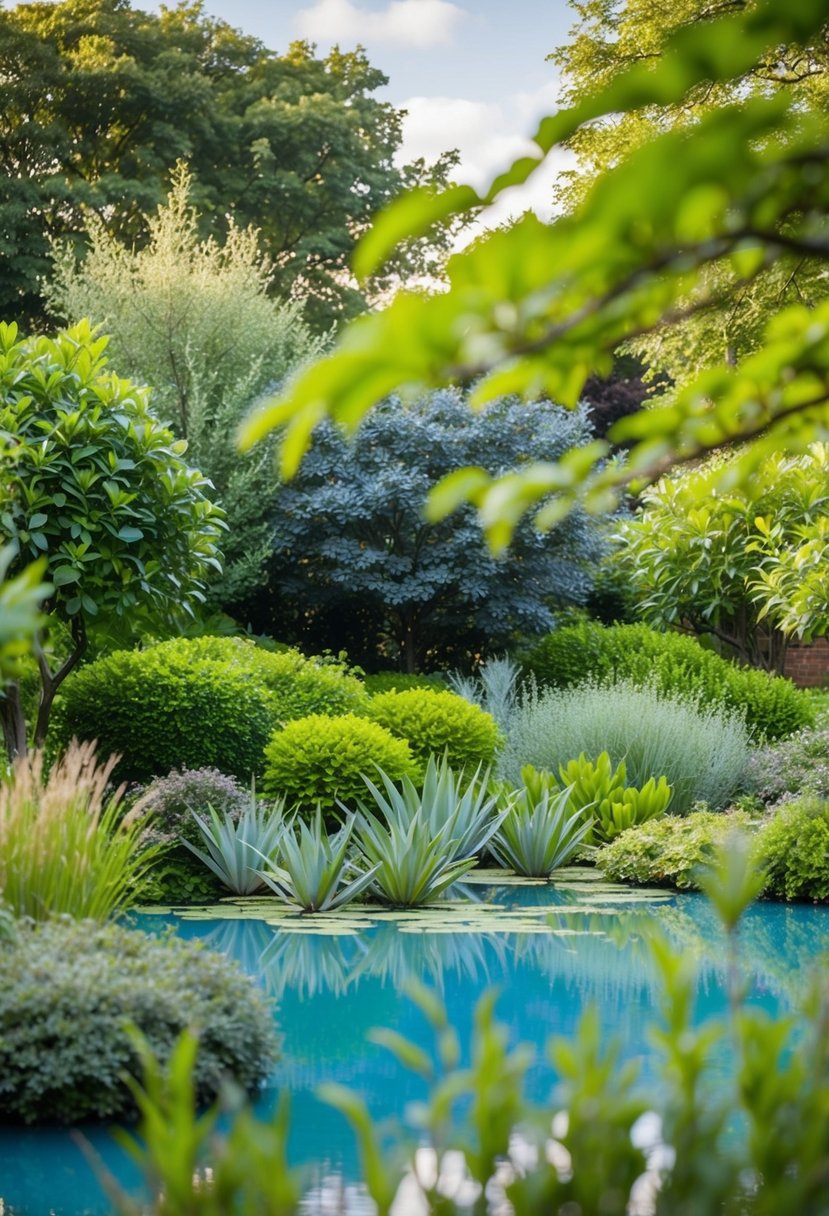
Cooler color palettes use shades like blue, gray, and purple. These colors help make a garden feel calm and peaceful. They are often used to create a relaxing space for rest and reflection.
Plants like dusty miller add silvery gray tones that blend well with purple flowers. This mix can give the garden a balanced, soft look. Using colors close to each other on the color wheel, such as blues and purples, keeps the mood harmonious.
Choosing cooler colors can reduce visual noise and create a more soothing environment. This makes them a good choice for quiet garden areas or spaces meant for meditation. A well-planned cool palette invites a sense of quiet and peace in the garden. For more ideas on garden color use, see this guide on garden color palettes.
7) Add a sun catcher or garden art to personalize your outdoor space
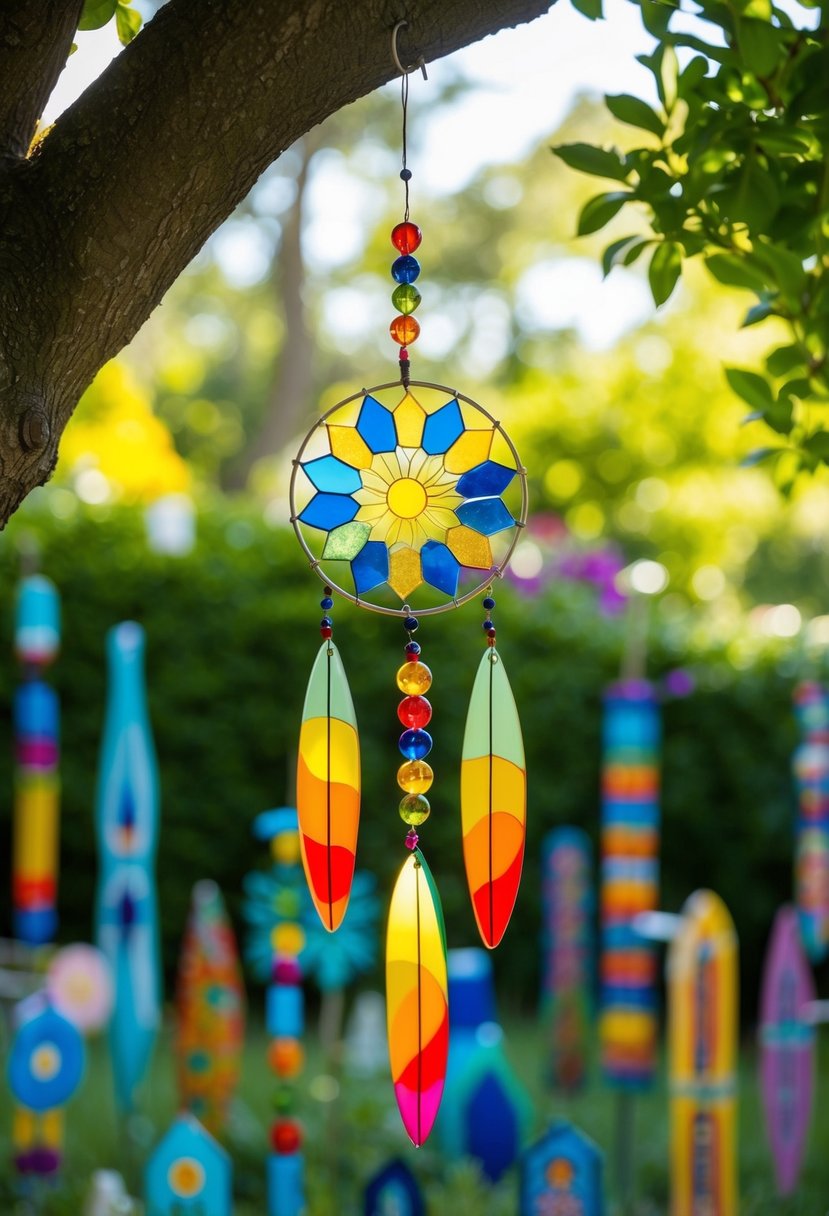
Adding a sun catcher can bring color and light to a garden. When sunlight hits it, the glass or beads reflect bright patterns. This simple art piece makes the garden feel more lively and unique.
Garden art, like metal sculptures or painted decorations, also adds personality. People can choose pieces that match their style or the garden theme.
Sunflower sun catchers are popular and easy to make using outdoor paint and beads. Kits with paints and shapes are available for those wanting a ready-made option. For more ideas, explore garden decor and sun catchers online, such as on Etsy or crafting sites.
Fundamentals of Garden Design
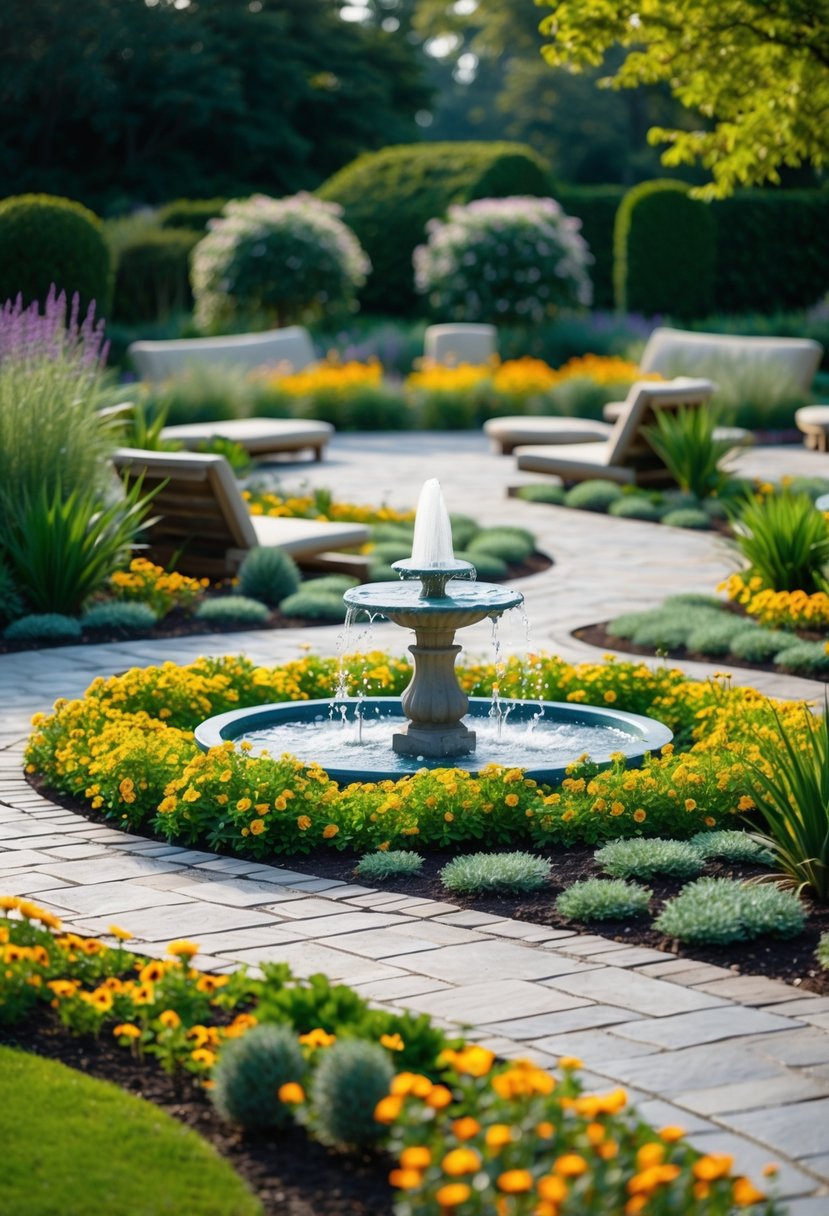
Designing a garden requires careful thought about how plants and features fit together. Space and scale affect the overall feel, while balance and proportion ensure it looks organized and pleasant.
Understanding Space and Scale
Space refers to how much area is available and how it is used. Properly planning space means leaving enough room for plants to grow without overcrowding. It also involves thinking about walkways, seating, and open areas to make the garden usable.
Scale means the size of elements compared to each other and the whole garden. Large trees or structures should match the size of the yard. Small details like flowers or ground cover must fit the space without looking lost or too crowded.
Using a scaled map helps visualize where everything will go. This planning step prevents problems and keeps the garden functional and attractive.
Balance and Proportion in Outdoor Areas
Balance creates a stable, orderly feel. It can be symmetrical, where both sides mirror each other, or asymmetrical, where different elements have equal visual weight. Symmetry suits formal gardens, while asymmetry offers a natural, informal look.
Proportion is about the size relationships between plants, furniture, paths, and other features. For example:
- Tall plants near short ones create interest
- Wide paths match the size of the garden and expected movement
- Seating areas proportioned to the number of users
Achieving balance and proportion makes the garden easy to navigate and visually appealing, enhancing enjoyment and comfort.
For more guidance on these principles, see Garden Design Basics.
Integrating Sustainability in Garden Planning

Sustainability in garden design focuses on using materials and plants that reduce environmental impact. Choosing the right resources and species helps save water, lower waste, and support local ecosystems.
Eco-Friendly Materials and Practices
Using eco-friendly materials means selecting options that minimize harm to the environment. This includes avoiding plastics and synthetic materials whenever possible. Recycled wood, natural stone, and permeable paving help reduce waste and improve soil health.
Composting garden waste returns nutrients back to the soil, cutting down on chemical fertilizers. It also reduces garbage sent to landfills. Mulching with organic matter like leaves or grass clippings keeps moisture in the soil and lowers water use.
Practices like reducing lawn size, planting native species, and limiting chemical pesticides all contribute to a sustainable garden. These choices conserve energy and provide habitat for local wildlife. Following such steps supports an eco-friendly landscape long term. More ideas on eco-friendly landscaping are available at kglandscape.com.
Water-Wise Plant Selection
Choosing plants that need less water is key to sustainable garden design. Native plants naturally fit local climate and soil, so they thrive with minimal watering. Drought-tolerant species like lavender, sedum, and some grasses reduce irrigation needs.
Grouping plants with similar water needs together prevents overwatering and water waste. Installing drip irrigation targets water directly at roots for efficiency.
Trees and shrubs placed strategically provide shade, which lowers evaporation and cools the area around the home. This reduces dependence on sprinklers and helps conserve water.
Using plants adapted to the region also lowers maintenance tasks and chemical use. For more tips on sustainable yard and garden ideas, visit houzz.com.
Conclusion About Garden Design Ideas
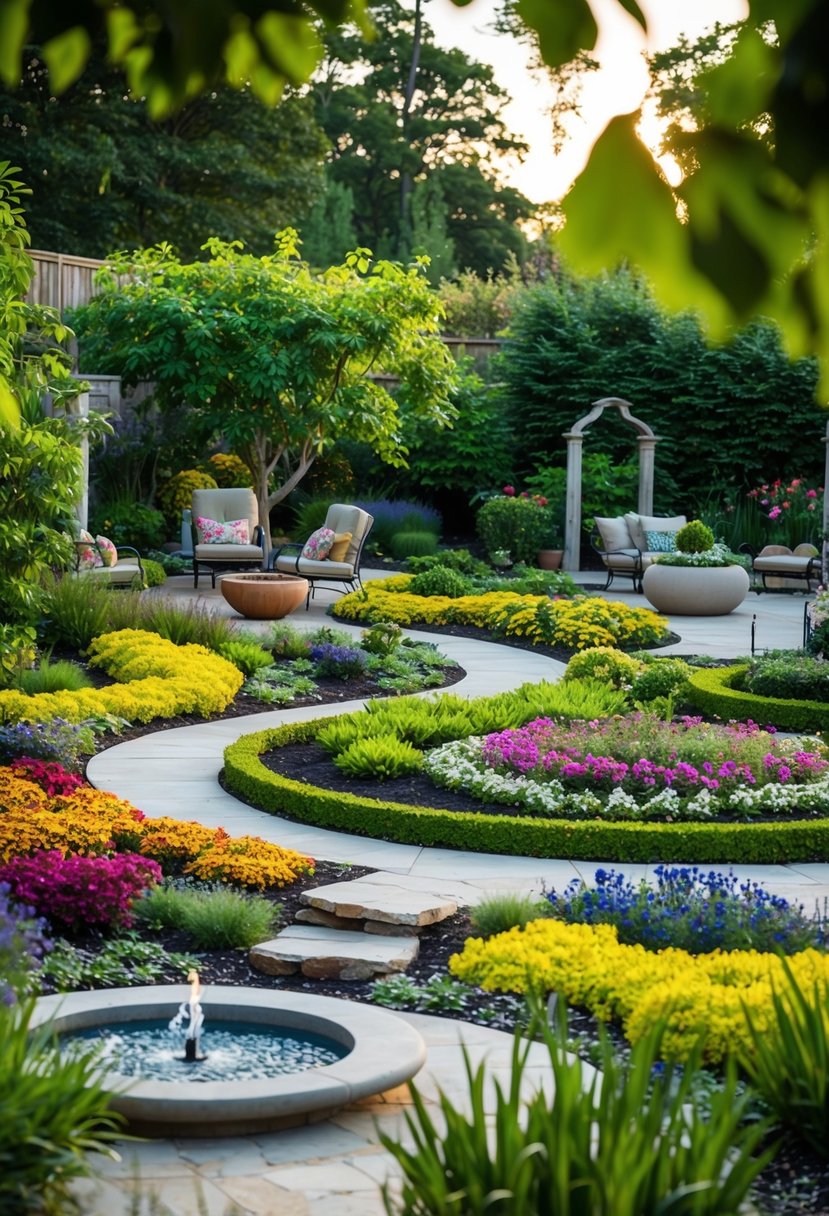
A well-designed garden enhances any outdoor space by adding beauty and function. Using simple ideas like layering plants, creating zones, or adding vertical elements helps make the garden interesting and practical.
Gardens benefit from clear planning. A layout plan guides where to place plants, paths, and seating areas, making the space easier to use and maintain.
Here are key points to remember:
- Balance between open space and planted areas creates comfort.
- Variety in plant types and heights adds texture and color.
- Boundaries help define the garden’s shape and keep it organized.
- Paving and paths improve accessibility and add style.
Small gardens can feel spacious by using vertical planting or container gardens. This approach saves ground space and brings more greenery into view.
Choosing plants based on climate and care needs ensures the garden stays healthy with less effort. Adding features like seating or lighting increases usability at different times.
Successful garden design focuses on both beauty and ease. With clear goals and these ideas, anyone can create an outdoor space that suits their lifestyle and tastes.
For more detailed garden ideas, see this guide on 7 Landscape Design Tips for Beginners.




